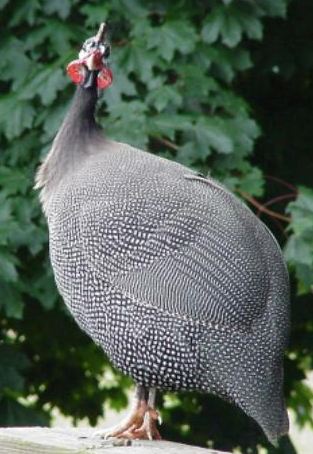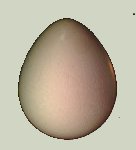Guinea Fowl
Category: Game Birds

Guinea fowl, common name for any of the seven species of gallinaceous birds of the family Numididae, native to Africa and Madagascar.
The largest and most-colourful species is the vulturine guinea fowl (Acryllium vulturinum), of eastern Africa, a long-necked bird with a hackle of long lance-shaped feathers striped black, white, and blue; red eyes; and a vulturelike bare blue head.
n their native Africa, guinea fowl have been used as domestic animals for hundreds of years as the large size of the guinea fowl means that just one bird can provide a great deal of food. These large birds measure from 40 to 71 cm (16 to 28 inches) in length, and weigh 700 to 1600 g (24 to 56 ounces)
They should be fed high protein turkey or game bird rations in confinement. Once started, they fend for themselves, living on insects, seeds, and grasses. They control deer ticks, wood ticks, grasshoppers, box elder bugs, flies crickets, and all other insects. The guinea fowl is an omnivorous bird and therefore has a diet that consists of both plants and other animals. Also people living in wooded areas have Guineas to keep the numbers of deer ticks low. They will kill snakes, and will alert you to anything unusual. If you already have other poultry, you will soon discover that guineas are not chickens. They are much more active than chickens and not as easily tamed. They seem to retain some of their wild behavior and will remind you of this whenever they get spooked.

Guinea Fowl Egg
Incubate eggs 26 to 28 days at 97.5 F. at 57 to 58 percent humidity. Being native to dry areas of Africa, the keets are very susceptible to dampness during their first two weeks, and can die from following the mother through dewy grass. Sexing Guineas One of the most-often asked questions about guineas is how to tell the hens from the cocks. Young guineas cannot be sight-sexed like other poultry or fowl. The hens and cocks look exactly the same except for some of the newer colors where the hens are darker, as both keets and adults. The only precise way to tell the sexes apart is to listen for the two-syllable call the hen makes. This sound has been described as sounding like "buckwheat, buckwheat", "put-rock, put-rock" or "qua-track, qua-track". This is the only sound that the hen makes that the rooster doesn't. The young birds start making these sounds at 6-8 weeks, but some hens do not start calling till much later.

 Back To Category Game Birds
Back To Category Game Birds